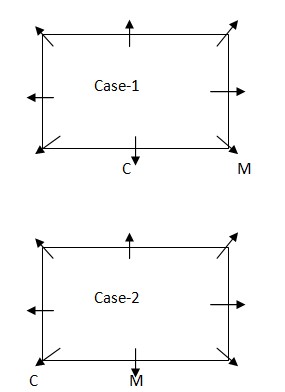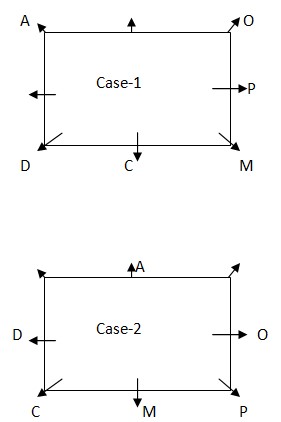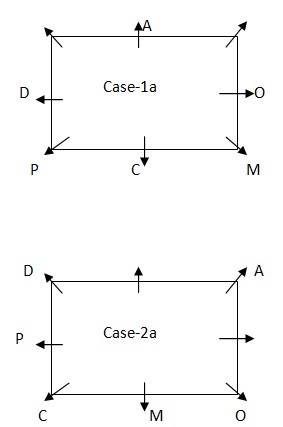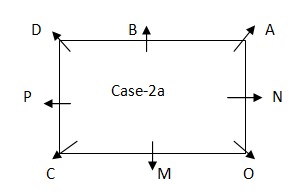Question
What is the position of B with respect to the one who is
sitting 2ndto the right of M? Study the following information carefully and answer the questions below. Eight employees A, B, C, D, M, N, O and P of a company are sitting around a rectangular table and facing away from the center of the table but not necessarily in the same order. Four of them are seated at the corners of the table and four are seated in the sides of the table. M is sitting 3rd to the left of the one who is sitting 2nd to the right of C. Only three persons are sitting between D and O. P is an immediate neighbour of either M or C. Person who is sitting opposite to A, is sitting 2nd to the right of O. N is sitting 2nd to the right of B. N is neither sitting opposite to C nor sitting in the corner of the table.Solution
M is sitting 3rd to the left of the one who is sitting 2ndto the right of C. Here we get two possibilities.  Only three persons are sitting between D and O. P is an immediate neighbor of either M or C. Person who is sitting opposite to A, is sitting 2ndto the right of O. Here we get two possibilities in both cases.
Only three persons are sitting between D and O. P is an immediate neighbor of either M or C. Person who is sitting opposite to A, is sitting 2ndto the right of O. Here we get two possibilities in both cases. 
 N is sitting 2nd to the right of B. N is neither sitting opposite to C nor sitting in the corner of the table. We cannot fix the position of N in case (1), case (1a) and case (2). So these cases are eliminated.
N is sitting 2nd to the right of B. N is neither sitting opposite to C nor sitting in the corner of the table. We cannot fix the position of N in case (1), case (1a) and case (2). So these cases are eliminated. 
The Krishi-Decision Support System (Krishi-DSS) is primarily aimed at advancing which sector?
What is the primary goal of sustainable agriculture?
The National Agricultural Cooperative Marketing Federation of India Ltd (NAFED) is an apex organization of marketing cooperatives for agricultural prod...
Who broke Sachin Tendulkar's record to become the fastest to reach 26,000 international runs?
The central government has launched the “Mera Ration Mobile App” in the country on
Which of the following committee was involved in the recommendation of establishment of NABARD………………..
Who has authored the book “The Hero of Tiger Hill” ?
The birth anniversary of Vergese Kurien is remarked as National Milk day and is celebrated on
…………………………State Government has launched the trees outside forest in India programme in association with USAID.
...e- NAM was launched on ………… under the Ministry of Agriculture and Farmer’s welfare.
Relevant for Exams:


